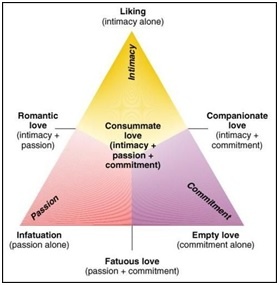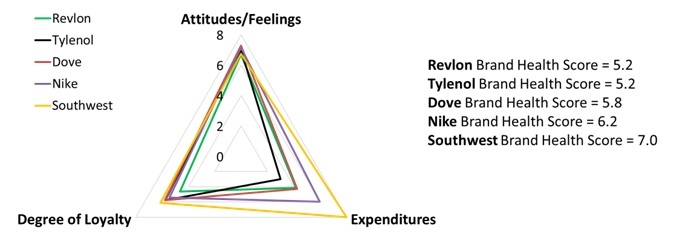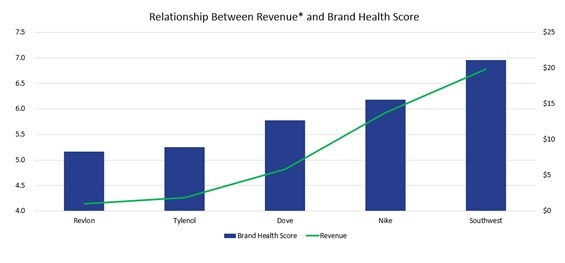 “How is my brand perceived relative to competitors?”
“How is my brand perceived relative to competitors?”
“What perceptions of my brand most drive behavior?”
“How do I positively impact perceptions of and behavior toward my brand?”
These are common, vital questions raised by marketers and brand managers. Measuring a brand’s “health” – how consumers perceive and interact with the brand, and how perceptions and behaviors align with revenue – is a common objective in market research, but is often not achieved because not all elements of brand health are measured.
Beall Research’s method of measuring brand health is comprehensive and differentiated by our use of a psychological framework to understand consumers’ relationships to companies and brands. This framework ensures that we measure the emotional and behavioral experience of a brand. The summation of this experience yields a measurement that is actionable and comprehensive.
A theory of love applied to brand health
Robert Sternberg, Ph.D., a preeminent research psychologist, has advanced a theory of love in romantic relationships called the triarchic theory. He posits that love is a combination of intimacy, passion, and commitment; and the type of love one experiences depends on the levels of each of these three things in the relationship. Different types of love result from each of the elements or combinations of elements, with consummate love being a complete form of love because it has passion, intimacy, and commitment in equivalent amounts. Sternberg asserts that relationships based on two or three elements are stronger than those based on a single element.
Relationships evolve over time and may include more or less of the specific elements at any given moment. Consummate love is not a permanent state; one of the elements may be lost over time. Thus, love requires action to maintain high levels of the three elements.

The triarchic theory can be used to understand the relationship between a consumer and a company or brand. The three components describe three major attributes: passion refers to one’s attitudes and feelings, intimacy refers to one’s behaviors, and commitment refers to one’s level of loyalty.

The objective of our approach is to create a comprehensive understanding of consumers’ relationships to brands. Measuring all three of these elements – attitudes, behaviors, and loyalty – is crucial, because they all have an important role in brand health, and as exhibited later, are not always highly correlated, meaning that a brand that performs well in one area may not perform well in another area. Further, the three attributes may differ in importance in different categories.
We measure attitudes and feelings with ratings of different attitudinal statements, behavior is measured with reported spending, and loyalty is measured in terms of the proportion of category purchases made with that specific brand.
- Behaviors = spending on products/services offered by the brand
- Attitudes and feelings = what the consumer thinks and feels about the brand
- Loyalty = the degree of commitment to the brand
As in Sternberg’s theory, a brand that scores well on all three elements is a healthy brand with committed customers. However, the individual elements can vary over time, so brand monitoring is important to understand if attitudes have changed, behavior has altered, or loyalty is different.
In our approach, each brand receives a score on each of the three individual elements as well as an overall score. These scores are then tracked over time. This brand scorecard provides a deep understanding of brand health over time.
Case study to assess brand health
We conducted a study utilizing this approach for a variety of brands. We surveyed 1,637 respondents between June 14 and July 6, 2016. Sixteen brands were selected to represent a range of categories, behaviors/spend, attitudes, and degrees of loyalty. These brands were Apple, Bridgestone, BP / British Petroleum, Coca-Cola, Dove, FanDuel, Firestone, Gap, Marlboro, McDonald’s, Nike, Revlon, Southwest Airlines, Tide, Tylenol, and Whirlpool. These brands represent the technology, durables, energy, beverage, personal care, online gaming, apparel, tobacco, food, travel, cleaning, and appliance categories.
Below is a chart that shows the three component scores with the total score for each of a few selected brands. Brands may be stronger or weaker on specific components, and their total brand score is reflective of all three pillars.
For example:
Revlon scores high on liking, but lower on loyalty and expenditures, with an overall brand score of 5.2
Tylenol scores high on liking and loyalty, but lower on expenditures, with a brand score of 5.2
Dove scores high on liking and loyalty, but lower on expenditures, with a brand score of 5.8
Nike scores high on liking, loyalty, and expenditures, with a brand score of 6.2
Southwest scores high on liking, loyalty, and expenditures, with a brand score of 7.0
For this analysis, yearly spend (which takes into account frequency of purchase and average amount spent per purchase) is converted to a 10-point scale.

All three components should be measured because the scores show that liking, loyalty, and expenditures are not always highly correlated. Across our study, attitudes and expenditures had a .38 correlation, expenditures and loyalty a .28, and attitudes and loyalty a .42. Thus, one’s attitudes don’t always predict one’s behaviors or one’s loyalty, and one’s loyalty isn’t always represented in one’s expenditures. Thus, in order to measure the health of a brand, one needs to measure all three aspects.
|
Correlation between Attitudes and Expenditures |
0.38 |
|
Correlation between Expenditures and Loyalty |
0.28 |
|
Correlation between Attitudes and Loyalty |
0.42 |
This research also shows that there is often a strong correlation between brand health and company revenue. The below chart plots the relationship between the total brand score and 2015 US revenue for several brands.

Conclusions
Marketers and brand managers understand the importance of measuring their brand’s health relative to competitors, although there are various methods of doing so. Our approach provides a complete picture because it measures the three areas that are fundamental to a relationship with a company or brand, by scoring brands on these three individual elements known to drive brand performance, calculating a total brand score, and monitoring and tracking brand health over time. The resulting insights can be used to measure the effectiveness of marketing programs, identify areas of needed communication and product/service development, and alert you to changes in the competitive landscape.
References
Sternberg, R. J. (1986). A Triangular Theory of Love. Psychological Review
*2015 US revenue estimates from publicly available sources. Nike, Revlon and Southwest revenue estimates are sourced from 10-K filings, Dove sourced from Statista.com, Tylenol sourced from Evaluate™
About the Authors: Beall Research is a boutique firm specializing in both qualitative and quantitative strategic market research. We look at the world differently than most market researchers because we are psychologists, anthropologists, historians, economists, mathematicians and sociologists. And we use theoretical backgrounds to frame insights that help solve real-world problems. Our insights drive major changes for organizations.


